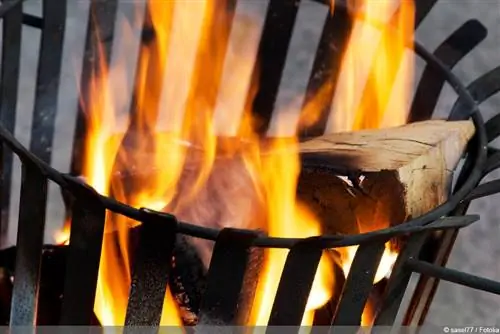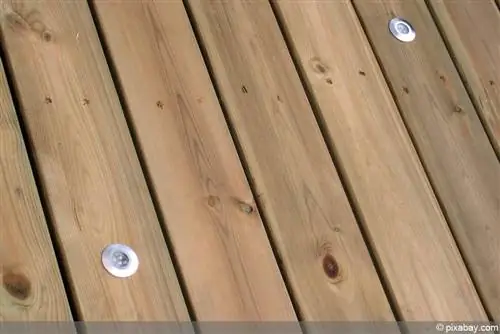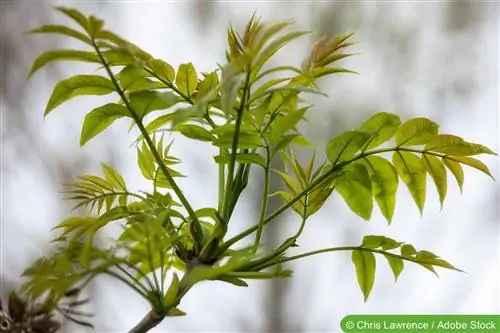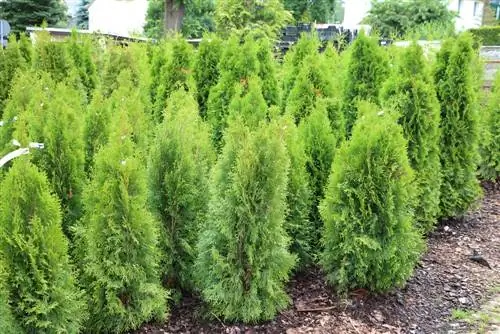- Author admin [email protected].
- Public 2023-12-17 03:39.
- Last modified 2025-01-24 12:45.
When it comes to ash as fertilizer, opinions differ. While some warn against it, for others it is completely harmless. This is because not all ash is created equal. Depending on the type of fuel, it contains substances that can harm people, plants and the soil. Therefore, you should pay close attention to the type and origin of the fuel.
Bad Ash
It is now undisputed that ash can be used as fertilizer for various plants. However, attention must be paid to the origin of the ash, i.e. the fuel. This can also contain toxins and heavy metals that are harmful to people, plants and soil. This is why the ash from hard coal or brown coal is not suitable as fertilizer for garden or house plants. It is a poor source of ash, while wood is considered a good source of ash as fertilizer. But when it comes to wood ash, the origin of the wood is also important, as it can also be contaminated with toxic substances. Therefore, you should not use the ash from wood that has been treated with varnish or glue for fertilization.
This applies, for example:
- Garden Stakes
- Fence posts
- Slatted boxes
- Furniture parts
- chipboard
- Wall paneling
Tip:
Caution is also advised with recycled wood, as this can also be contaminated.
In addition to the question of whether the wood has been treated with varnish or glue, the location of the trees from which the wood was obtained also plays a role. If the wood comes from stands next to highways, streets or industrial areas, then it contains harmful residues and is not suitable as fertilizer.
Good Ashes
Good ash comes from trees from a clean location and whose wood has not been processed. This is usually natural wood that is burned in the living room fireplace or in a wood stove if the correct kindling is used, as paper can also contain toxic substances. Therefore, you should only use newspaper that is printed in black and white for lighting. Colored newspaper pages, catalog pages, brochures, unprinted boxes or glossy paper are unsuitable as the resulting ash contains toxins.
Effects and properties
Natural ash contains plenty of potassium (K). It helps ailing plants with a potassium deficiency. It also adds phosphorus to the soil, which plants need for their development. Since it contains lime, it has an alkaline effect, i.e. it neutralizes acidic soils. It also has an anti-fungal and anti-rot effect.
Grill ash as fertilizer?
The use of grill ash, which is produced when burning charcoal while grilling, is controversial. The federal and cantonal authorities state on their information platform that ash from a charcoal grill can be spread in the garden without any problems. However, only if no environmentally harmful aids are used to ignite it. The argument against using ash from barbecue charcoal is that people often do not know the origin of the charcoal. In addition, the ash often contains fat residues that contain degradation products that are harmful to he alth.
Do not fertilize
Plants that need acidic soil for he althy development must not be fertilized with ash. In this case, alkaline wood ash is even counterproductive because it reduces the quality of the soil for the plants. Therefore, you should under no circumstances spread the ash in peat beds or on slightly alkaline soils (from a pH value of 7.5) if you cultivate the following plants:
- Azaleas
- Hardworking Lieschen
- Blueberries
- hydrangeas
- Japanese Maple
- Camellias
- Kiwis
- Laurel
- Daffodils
- Orchids
- Palm trees
- Peonies
- Cranberries
- Rhododendrons
- Horse Chestnuts
Fertilize

While wood ash is harmful to plants that need acidic soil, it is a good fertilizer for plants that prefer alkaline or neutral soil. These include in the fruit and vegetable garden:
- Green asparagus
- Raspberries
- Carrots
- Brussels sprouts
- Leeks
- Celery
- Gooseberries
- Tomatoes
- Wine
- Onions
Be careful when fertilizing potatoes with ash, as it can promote potato scab disease on the plants.
Tip:
So that you do not absorb any substances harmful to your he alth when eating fruit and vegetables, you should only use ash as fertilizer in the kitchen garden if you know exactly the origin of the wood.
ornamental garden
In the ornamental garden, the following plants enjoy the natural fertilizer:
- Chrysanthemums
- Fuchsias
- Geraniums
- Gladiolus
- Lavender
- Carnations
- Phlox
- Roses
Application
Fertilizing with wood ash is intended to improve the soil so that the plants can develop well. However, giving ash can also lead to over-fertilization. The rule of thumb for spreading the ashes is:
- 30 to a maximum of 50 grams per square meter
- every four to six weeks
Tip:
You should avoid using ash fertilizer on soils with a high potassium content, as there is a risk of over-fertilization.
When spreading the ashes, proceed as follows:
- drawing thin grooves around the plants
- fill with ash
- Cover ashes with soil
- pour carefully
The ideal time to start fertilizing with ash is late winter orearly spring, just before the plants start budding. To ensure that the ash stays where it belongs, you should spread it on a day with as little wind as possible. It is also recommended to protect your eyes and respiratory tract, as ash is very fine.






